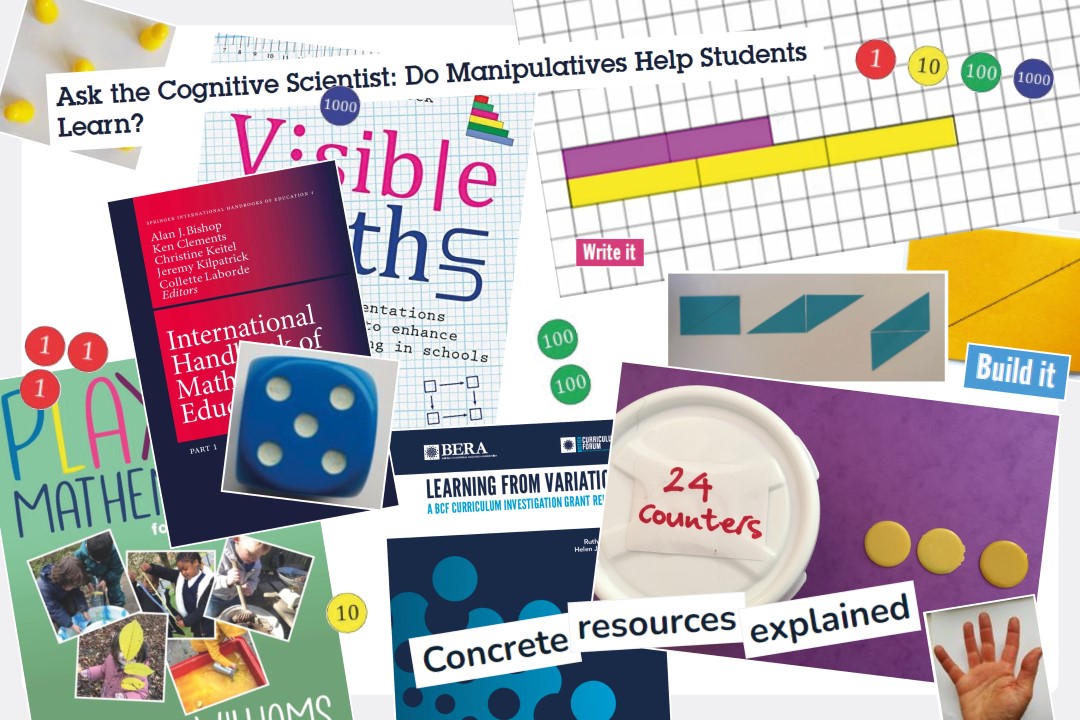Developing your use of manipulatives in maths teaching
Articles, books and video to help you use physical representations more effectively in lessons
10/10/2022

There’s a growing consensus among maths teachers, and those who guide their development, that physical manipulatives should play a central role in maths teaching. Not just for young pupils, and also not just for those who can’t understand something. They can always be of help to build or deepen understanding of a mathematical concept. That was the broad conclusion drawn from a Tuesday evening Twitter-based #MathsCPDChat on the use of manipulatives held at the start of the autumn term. You can read a full account of the chat elsewhere on our website, but below, in no particular order, we summarise some of the articles, resources and video mentioned by participants during the discussion. Some are free, some are paid for.
Articles and blogs
- An introduction to algebra tiles A mixture of text and short video clips in an article that covers how algebra tiles can be used to support pupils in counting, and in understanding linear equations, factorising and more.
- Do manipulatives help students learn? An article by Daniel Willingham on the website of the American Federation of Teachers argues that how a manipulative is used in a classroom is more important that whether it is used.
- Manipulatives and variation theory An article published by the British Educational Research Association (BERA) looking at how to teach ‘counting on’ to young children
- Concrete resources explained for parents A blog post aimed at helping parents of primary-age children understand various manipulatives, and how they might use them with children at home.
Books
- Playful Mathematics A book published earlier this year (March 2022) aimed at those teaching children from 3- to 7-years-old use manipulatives, and other approaches in playful situations, which—bit by bit—help to build understanding.
- Build it, Say it, Write it is one of several books on using concrete resources from the Association of Teachers of Mathematics (ATM). It covers learning of perimeter and area. Other books from the ATM address different mathematical topics.
- Concrete Materials in the Classroom is one of 37 chapters in a publication from 1996 with authors from around the world.
Video
- Division of fractions is an 11-minute video from the author of a book called Visible Maths. It suggests how Cuisenaire® rods might be used to support the teaching of division of fractions.
NCETM resources
Last but not least, we need to mention our own resource, Using mathematical representations in KS3, written by our Secondary Team in 2019. It includes guidance, video and tips on using nine different representations, including:
- algebra tiles
- place-value counters
- Dienes
- Cuisenaire® rods.
<p>Want to benefit from one of our CPD chats?</p>
<p>Every week a chat takes places where ideas and resources like those above, on different topics, are shared by working teachers</p>
Discover